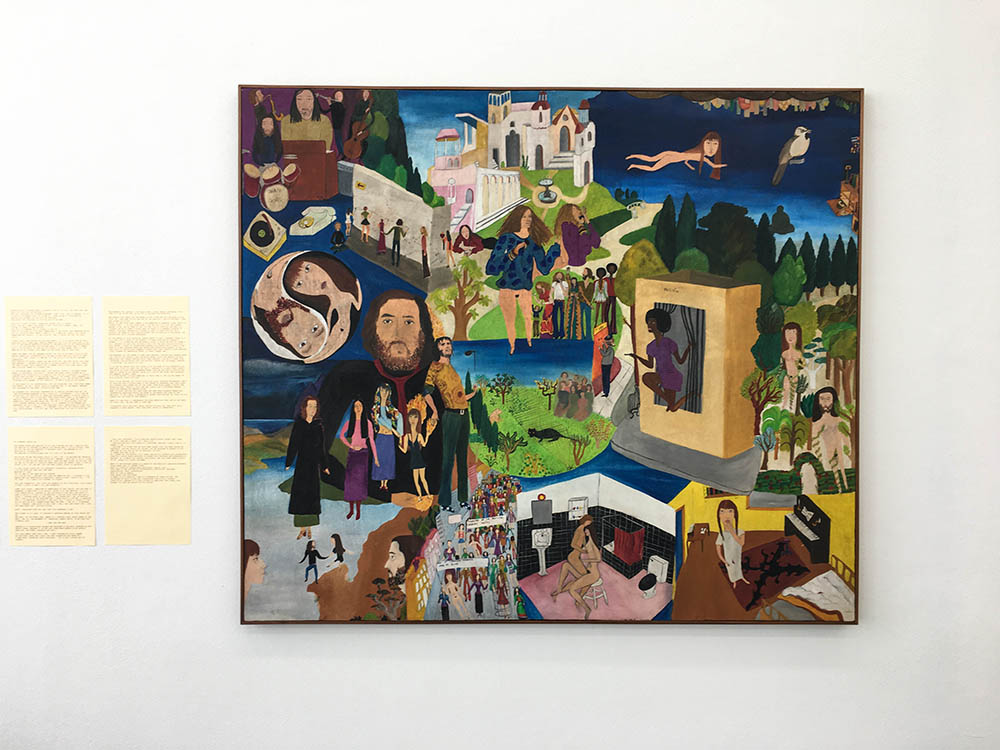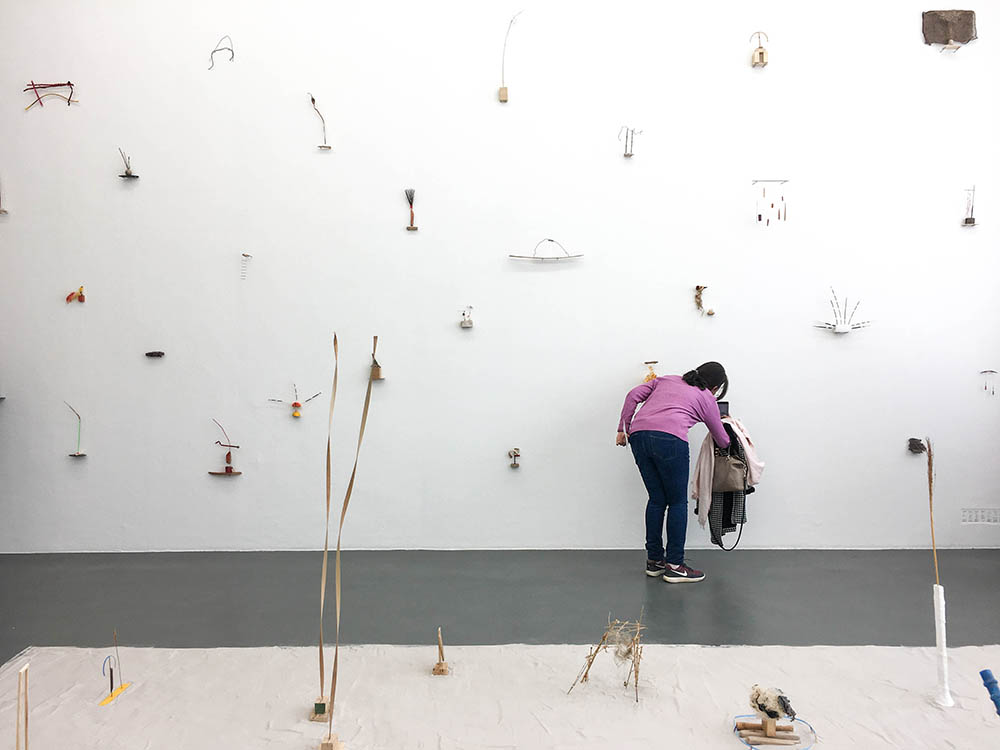MAP Issue ⧣50, Mid-Flight, 2019
For the visitor unfamiliar with Vicuña’s works, the show does a credible job of providing both context and examples of Vicuña’s various phases of artistic practice. Vicuña was, and remains, an artist deeply engaged in the political dynamics of her time, and it can be difficult to separate works from the political eras in which they were created. There is, perhaps, a certain unease to be felt in viewing her Vietnam War-era works that proclaim solidarity with the Vietnamese resistance to the American war of aggression. These brazen, declarative images and slogans articulate an honourable political position clearly enough, and they are central to understanding Vicuña’s later works, but when one thinks about the ravages that particular neo-colonial misadventure produced—more than three million dead, three countries pushed to the brink of wholesale destruction, chemical warfare that continues to claim victims more than forty years after the ostensible end of hostilities—bleak truths about the fate of political art settle in the brain, not least as one stands in a space named after a Dutch colonial apparatchik. Indeed, this section of the exhibition forces the question of what role art can play in a time of political urgency. In my own case, any meaningful answers remain elusive.



Vicuña is a genuinely unique painter, possessed of a painterly consciousness that seems to exist in multiple epochs of history simultaneously. Looking at works like ‘Hammer and Cabbage’ with its intertwining, fleshly forms, and the titular tool and vegetable, Vicuña’s surrealist bona fides, perhaps via her connection to the great British surrealist, Leonora Carrington, are well established, but with her surrealism reaches new heights—and finds a strangely medieval idiom. Her suitably trippy ‘Janis & Joe, Joplin Cocker’ sees the two pop stars entwined across time and space, performing, floating in roundels, and otherwise embodying transcendence. The accompanying text, ‘Explanation of “Janis & Joe, Joplin, Cocker”’, does exactly what it says and yet does so much more, and less. ‘The turntable floating in the air means that when I die, if there’s no music, wherever I go I’d like to bring a turntable, because it’s a great invention for listening to John Coltrane,’ she writes, both taxonomising her canvas and expressing a unique, oddly aspirational theogony that says as much about the nature of human apotheosis as anything in the exhibition.



Her ‘Precarious Objects’, a collection of more than sixty pieces assembled as an installation, is perhaps the most eloquent expression of this tendency in her practice. A small rectilinear patch of sand and a number of compact shelves on the gallery wall house the works, and they are as precarious as their titles suggest, delicate, unresolved assemblages and forms evoke architecture and children’s toys at once; each of these objects embodies the kind of painstaking and nurturing approach Vicuña speaks of more directly in other works, but in their refusal of single interpretations, somehow these works gesture toward a higher form of democratic endeavour. They permit, even demand, a proximity and willingness to take time on the part of the viewer.
A future in which a new sky replaces the old one will require just this kind of emotional commitment, and in these quieter moments, Vicuña seems to provide the tools for working the soil to nurture the seed of the new form of living she envisions.




